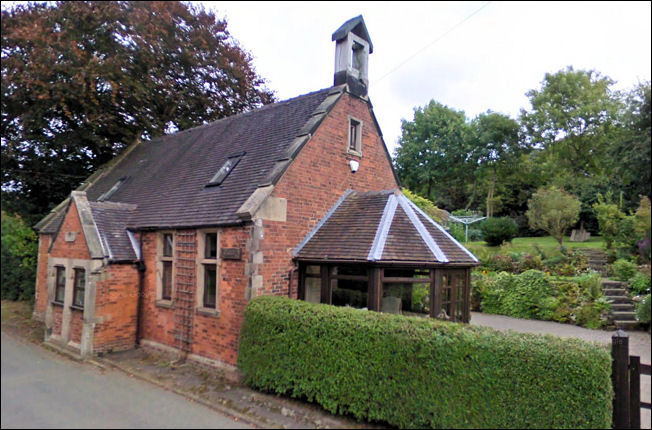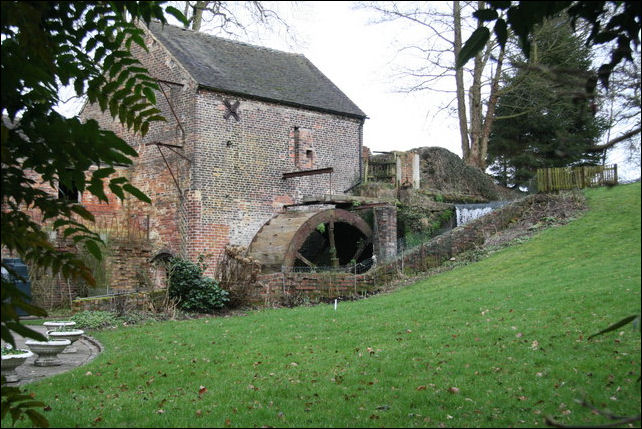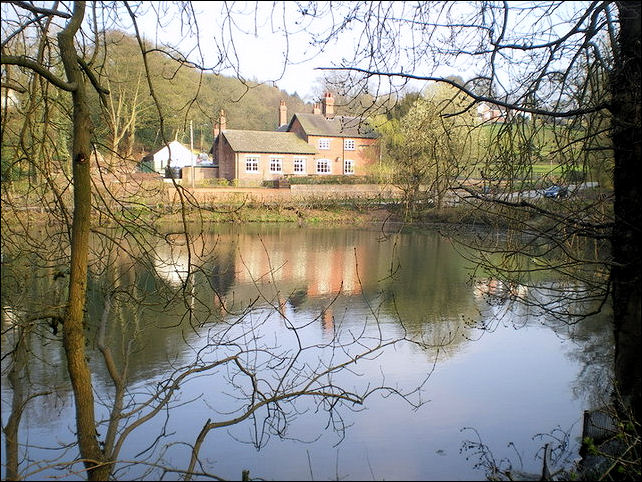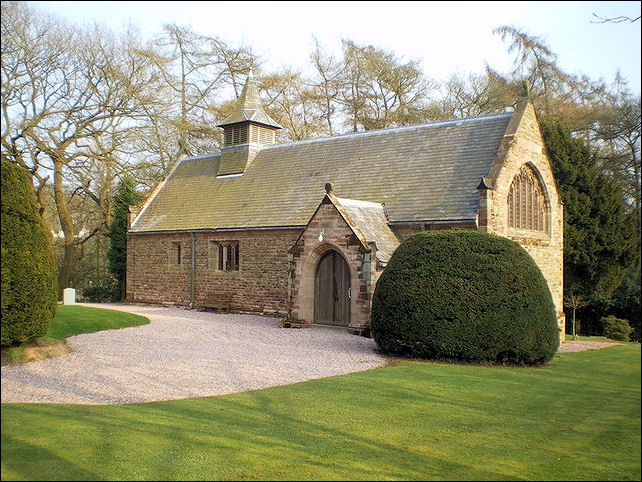|
Moddershall looks utterley timeless
Moddershall is one of dozens of little hamlets that have grown along Staffordshire’s east bank of the River Trent over centuries. It has a population of 500.
“Walking!” declares John Fairbanks when I meet him at Moddershall village hall. “I suppose you could go from the Boar to Spot Acre, Mosterley then Hayes Bank. Alcott Water takes you to Fox Earths through Black Bake then to Leadendale,” he says, describing the perimeters of the place of his birth and home for 66 years. John is a native of Moddershall and one of a diminishing handful of residents able to trace their ancestry back further than their own lifetime.
“Sometimes I can hardly recognise it from when I was a boy,” he says wistfully. “Accountants! Them and city-people! That’s what’s changed villages like Moddershall, and it’s happening all over. I don’t know many people here these days; most keep themselves to themselves. They live here because it’s in the country but they drive out for all their amenities. They buy land and build houses, or they convert commercial and civic buildings into domestic places. I’m not complaining. This is how things have happened. But it’s an illustration of how the English village has lost its heritage. People who live in villages these days are not villagers in the truest sense. The only communal resource in Moddershall now is the pub, everything else has gone – the school, the post office shop, even the bus service. That suits the newcomers because they have the best of both worlds.”

The Old School
Moddershall
The former school dates from 1844, but by 1966 falling rolls caused it to be transferred to Oulton.
Reinforcing John’s assertions is a Victorian property opposite the village hall bearing a sign which declares, ‘The Old School Moddershall.’ Nearby another converted building carries a plaque, ‘The Old Post Office.’ As he says, things are not what they used to be. The former school dates from 1844, but by 1966 falling rolls caused it to be transferred to Oulton. Despite these community changes Moddershall retains the look of a picturesque English village with its pub, mill and millpond at the centre. John’s family have lived at nearby Lower Close since 1888 with connections in the locality dating back to 1702.

Top or Splashy Mill, Mill
Lane, Moddershall
In order to use water for milling a license had to be obtained from the Lord of the Manor and here around Moddershall the mills were used as flour mills and later for grinding flint for glaze in the pottery trades.
© Copyright Chris
Allen and licensed for reuse
under this Creative
Commons Licence.
“Like many around here I came from a family of brick makers and wheelwrights. I started work as a brick maker and was also taught to repair and service the water mills that put Moddershall on the map,” he says. “I have a great passion for industrial archaeology and I’ve worked on the restoration of most mills around here, in particular Splashy Mill. Later on I took over my uncle’s rural funeral business as well.”
Splashy Mill has been wonderfully preserved in its original condition. Although it’s not in use these days it has been incorporated as a feature in the garden of a modern house at the bottom of Mill Lane with a splendid three metre high waterfall carrying away the natural spring floods from the high woodland above the millpond and away to the Blythe basin.
“You can go back to Saxon times,” says John, “to find evidence of water mills around this part of Staffordshire, and it was known in Domesday mysteriously as Modders Hale. But the later development of the land around this part of Staffordshire owes much to the Pilkington family and its connections with the Wedgwoods.”
The manor and estate was controlled from Butterton, two miles west of Trentham and was once owned by the Swinnertons. It passed to Lady Pilkington, widow of Sir William Pilkington who died in 1850. In order to use water for milling a license had to be obtained from the Lord of the Manor and here around Moddershall the mills were used as flour mills and later for grinding flint for glaze in the pottery trades.
“The flour was sold to bakers at Cresswell,” says John. “James Brindley was said to have worked on mills here although the Boar mill was built by Thomas Smith from Endon.”
John’s researches reveal that iron ore was also mined here.
“In fact it was sluiced directly out of the ground,” he says. “Along Mill Lane you can see how fast the water runs in the ditches. Sluice gates were placed to wash out the iron ore for blasting at Meir Heath.”


the Boar Inn and millpool
at Moddershall
© Copyright Richard
Law and licensed for reuse
under this Creative
Commons Licence
Moddershall, although not as important as the Churnet Valley forges and water mills, seems to have been central to the Industrial Revolution in the mid 18th century with the growing population in the villages needing more corn and for the increasing pottery trades. And fundamental to village life and work has always been the inn. The Boar at Moddershall is no exception, managed these days by business partners Jeanette Halls and Debbie Williams.
“We’ve been at the Boar for the past eight years,” says Jeanette. “It’s always been a traditional pub and we’ve tried to keep it that way.”
One of the first innkeepers was William Moss who in 1910 planted a yew tree in his garden shaped like a boar beside his mill. The yew tree remains a feature of the old pub today but the topiary has gone. The Boar Mill next to the mill with an 18 foot diameter wheel, 4 feet wide with a driving force of 44 hp. The last miller was Joseph Brooks.
“I understand the mill was in use until 1954,” says Jeanette. “Shortly after it closed it was demolished. It now forms part of the car park. The whole covers two acres of woodland and has won conservation prizes over the years.”
Jeannette and Debbie recall previous innkeepers, Mr Gilbert and Tom Waring.
“Don’t get me going on Tom Waring,” says Debbie fearfully. “The pub is haunted by his ghost.”
If I had a pound for every time a publican related a story of a hostelry haunting I’d be well rich by now. I try to get away by faking mock interest but no ruse will stop Jeanette and Debbie going on about men with “crisp white shirts billowing in the cellars,” and “the sudden smell in the taproom of fresh fag smoke,” and “the cleaner’s mother’s favourite perfume.” What is it with pubs and spirits?
The Boar’s name supposedly comes from hunting, in fact there is a carved stone figure of a boar on the stables next door, but no one seems to know where the name came from; but the beer is good.
Les Bunn and Gwen Mycock are neighbours at Hilltop Cottages just above the mill ponds.
“Perhaps I don’t look seventy-four,” smiles Les with imaginative candour. “But I was born here, I went to school here and I started work here in farming when I was fourteen. But after that I spent my working life as a brewer’s drayman for Joules at Stone.”
Being a drayman for Joules was a job many men of my own times would have died for. On the day of a delivery characters like Les rolling their barrels down the cellar drops were treated as royals. I manage a witty aside – “I’ve never seen a sober drayman,” I say with smug poise, to which Les responds with wittier repartee – “And I’ve never seen a drunken one!”
Hill Top has two rows of neat semi-detached council houses. On the open market these days they’d doubtless fetch a tidy return.
“My family name is Moss,” says 66 year old Gwen. “I’ve lived here since birth. There were stone cottages here then before the council houses. Somehow the family thrived even though my parents had thirteen children and I was the youngest. But we were happier in those times. I reckon they must have been happy times because I went on to have eight children of my own. And now my daughter lives next door.”

All Saints church, Moddershall
On the road to Knenhall a short distance from the Boar pub is All Saints church with its delightful garden cemetery. The church was built from local stone in 1904 and owes its existence to the enterprise of three Wedgwood sisters: Hope Wedgwood who lived in Moddershall, Frances Julia Wedgwood, and Katharine Euphemia Farrer. Godfrey Wedgwood of Etruria Hall, and Hope herself, the daughter of Hensleigh Wedgwood of Maer Hall are both buried here.
A parting word from John sends me away with a suitable anecdote from this secluded corner of Staffordshire.
“We rebuilt the church when subsidence caused structural damage in 1994,” recalls John. “The outside was constructed with the same materials but while undergoing the work someone stole the church bell. Happily we managed to get it back from a scrap metal yard in Middlewich before it was damaged.”
As children John, Les and Gwen remember horse-drawn ploughs, the village blacksmith and the shop where you could buy vinegar from a barrel; cow sheds and sheep dips, corn mills and fast-flowing streams.
“I think I’ve seen more changes in my lifetime than any comparative lifetime in history,” says John.
He’s right of course, and yet for all the changes Moddershall to me looks utterly timeless.

|
![]()
![]()
![]()